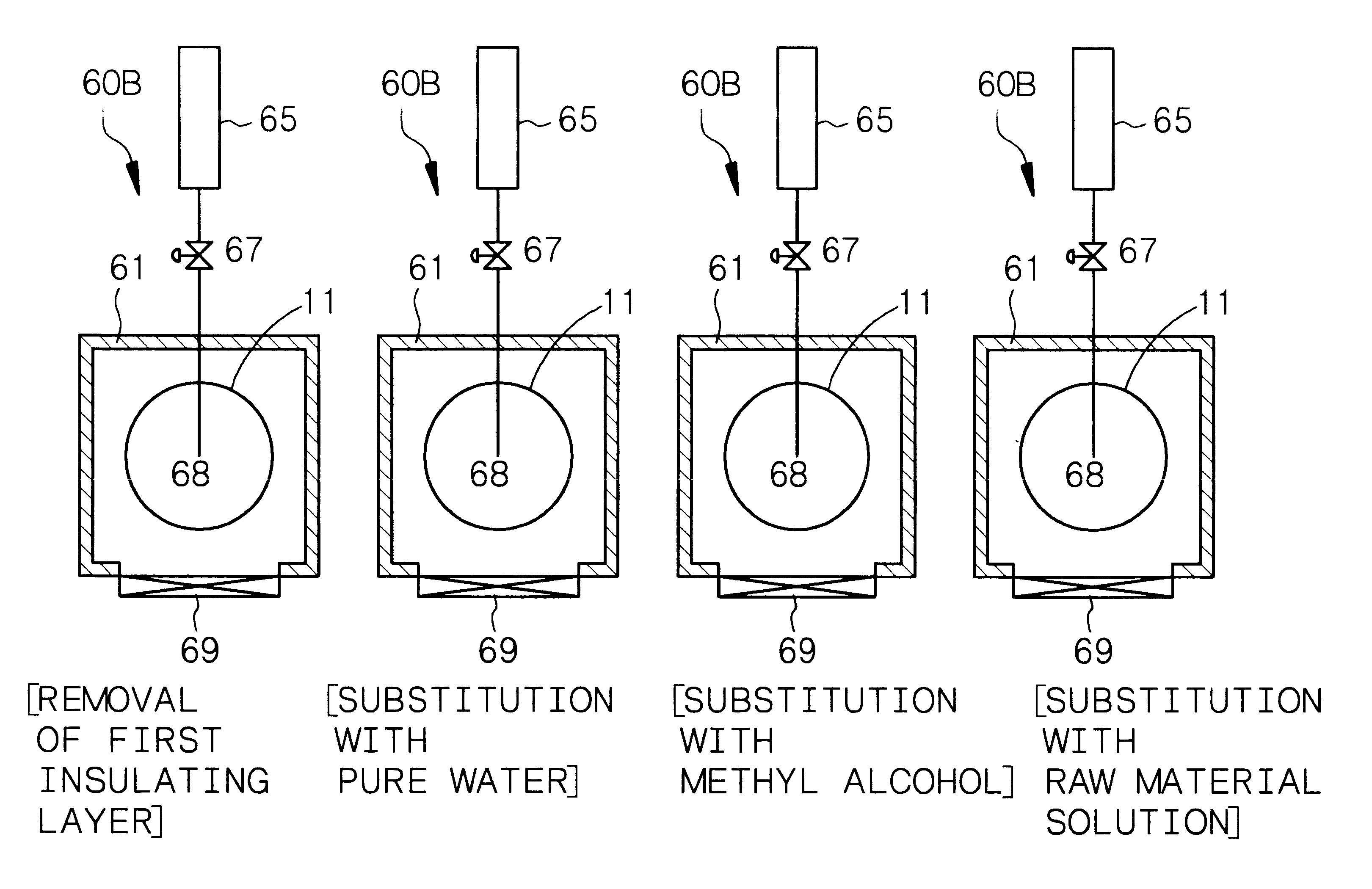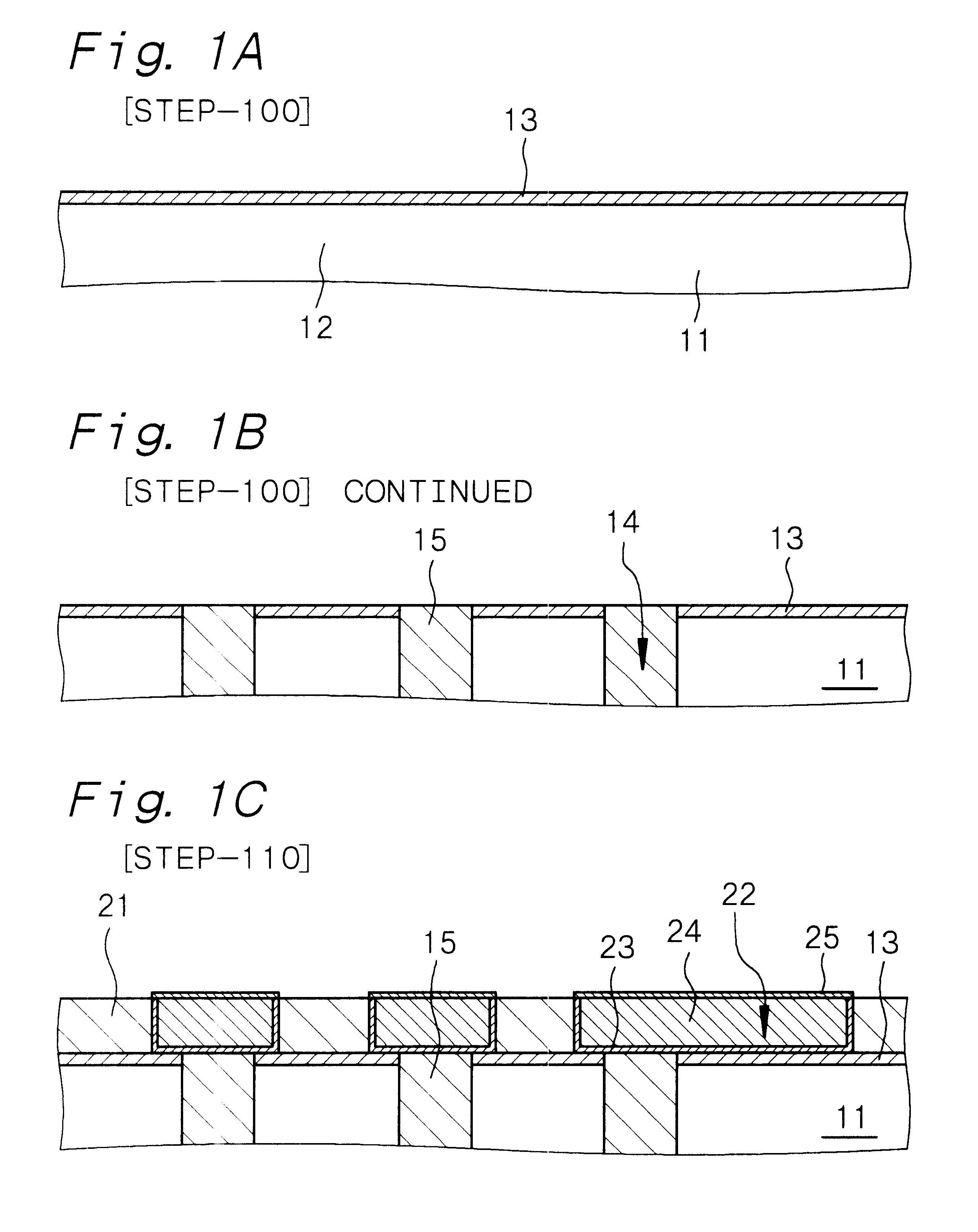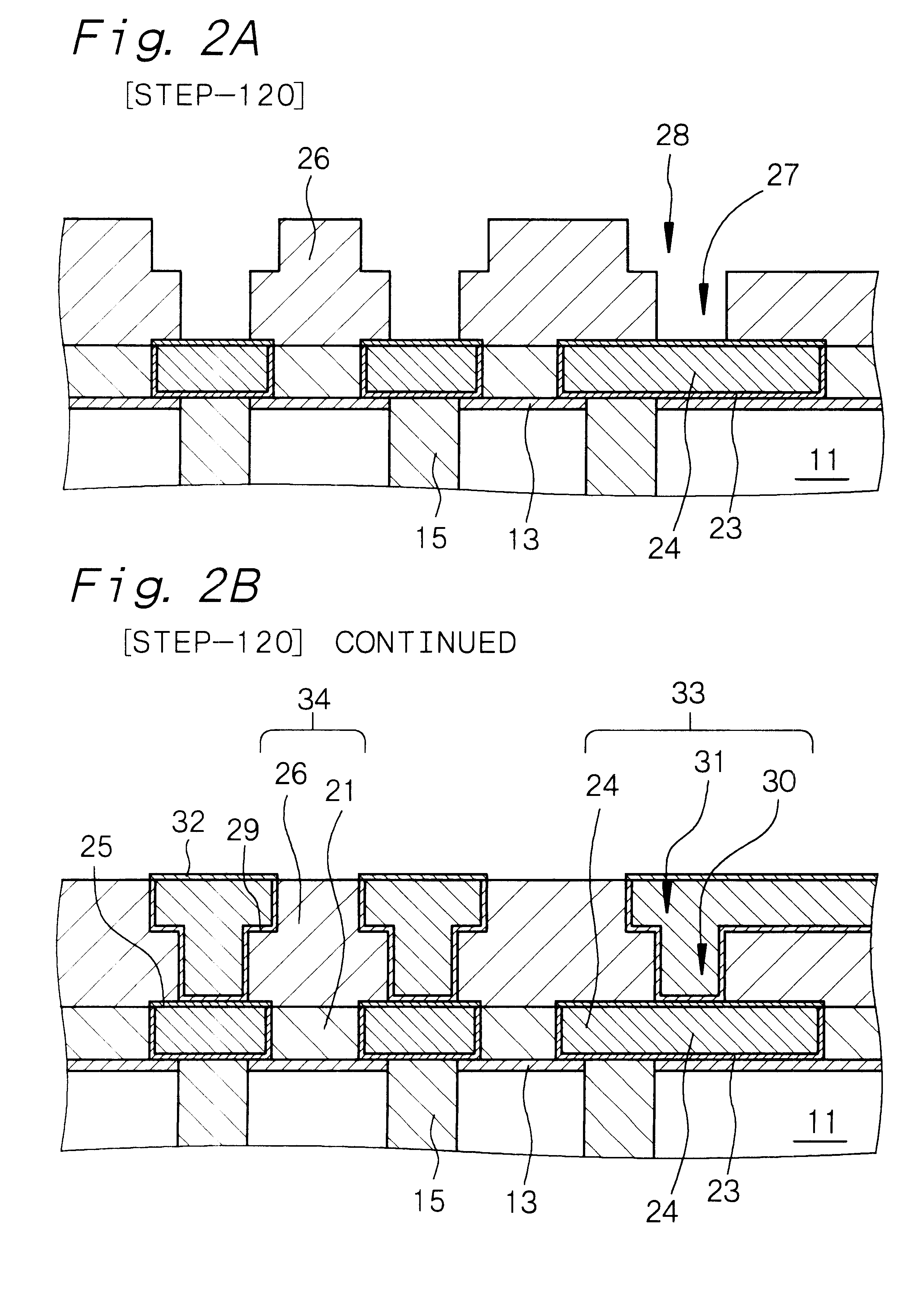Method of forming buried wiring, and apparatus for processing substratum
a technology of substratum and buried wiring, which is applied in the direction of spraying apparatus, coatings, basic electric elements, etc., can solve the problems of difficulty in forming grooves and/or holes having a desired form in porous insulating layer under good control by dry etching method, and low mechanical strength of porous insulating layer, etc., to achieve high reliability and not damaged or broken
- Summary
- Abstract
- Description
- Claims
- Application Information
AI Technical Summary
Benefits of technology
Problems solved by technology
Method used
Image
Examples
example 1
is concerned with a method of forming a buried wiring, provided by the present invention. The method of forming a buried wiring in Example 1 will be explained with reference to FIGS. 1A, 1B, 1C, 2A, 2B, 3A, 3B, 4A, 4B, 5A and 5B showing schematic partial cross-sectional views of a substratum and the like.
[Step-100]
First, a semiconductor device such as a transistor and a lower wiring layer (these are now shown) are formed in or on a semiconductor substrate (not shown), and then, a lower insulating layer 12 is formed thereon. The lower insulating layer 12 corresponds to a substratum 11. Then, a protective insulating layer 13 for protecting the lower insulating layer 12 from a fluid (first-insulating-layer dissolving fluid) to be used for dissolving a first insulating layer in a step to come later is formed on the lower insulating layer 12, for example, by a CVD method (see FIG. 1A). The protective insulating layer 13 is composed of silicon nitride (SiN). Then, a hole portion 14 is for...
example 2
is concerned with the first-structured apparatus for constituting the apparatus for processing a substratum of the present invention. The first-structured apparatus will be referred to as "first processing apparatus" hereinafter. The first processing apparatus of Example 2 is a single wafer processing apparatus, which can be used for carrying out the steps (B) and (C) and the step of filling the second insulating layer formed by gelation in the raw material solution at least between the wirings (to be referred to as "filling step in the step (D)" hereinafter) out of the step (D) in the method of forming a buried wiring in the present invention.
FIG. 6 shows a conceptual view of the first processing apparatus 60 of single wafer processing apparatus type, in which the first-insulating-layer removing means and the raw-material-solution substituting means are constituted of one process chamber 61. The process chamber 61 has a substratum supporting stage 62 and a substratum transfer porti...
example 3
Example 3 is concerned with the second-structured apparatus for constituting the apparatus for processing a substratum of the present invention. The second-structured apparatus will be referred to as a "second processing apparatus" hereinafter. The second processing apparatus of Example 3 is a single wafer processing apparatus, and the steps (B) and (C) and the filling step in the step (D) in the method of forming a buried wiring in the present invention are carried out with separate second processing apparatus.
Each of the first-insulating-layer removing means and the raw-material-solution substituting means has a process chamber 61; a substratum supporting stage 62 which is disposed in the process chamber 61 and is used for supporting a substratum 11 thereon; a substratum transfer portion 69 provided in the process chamber 61; a fluid supply source 65 of a fluid for dissolving the first insulating layer or processing fluids for carrying out various processes (these fluids will be s...
PUM
| Property | Measurement | Unit |
|---|---|---|
| relative dielectric constant | aaaaa | aaaaa |
| width | aaaaa | aaaaa |
| temperature | aaaaa | aaaaa |
Abstract
Description
Claims
Application Information
 Login to View More
Login to View More - R&D
- Intellectual Property
- Life Sciences
- Materials
- Tech Scout
- Unparalleled Data Quality
- Higher Quality Content
- 60% Fewer Hallucinations
Browse by: Latest US Patents, China's latest patents, Technical Efficacy Thesaurus, Application Domain, Technology Topic, Popular Technical Reports.
© 2025 PatSnap. All rights reserved.Legal|Privacy policy|Modern Slavery Act Transparency Statement|Sitemap|About US| Contact US: help@patsnap.com



